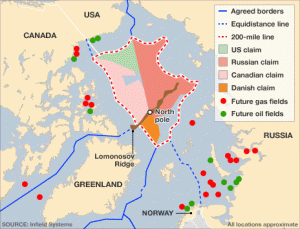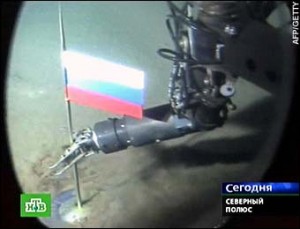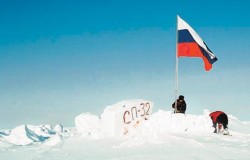With a cold chill blowing through DC, it seems fitting to note several recent Arctic developments.
Canada on Friday submitted a claim to the U.N. Commission on the Limits of the Continental Shelf that argues for an increased maritime share beyond its Exclusive Economic Zone of the (mostly) North Atlantic and Arctic, which would grant it rights to the resources contained therein on the seabed and is based on the nation’s view of the proper demarcation of the undersea continental shelves. Russia and Denmark are both expected to file overlapping claims with the commission.

While Friday was the “official” deadline for Canada, as it was 10 years after the nation signed the U.N. Convention on the Law of the Sea (UNCLOS), officials have said it will submit additional claims. Any such claims could extend to the North Pole once on-going scientific surveys have been completed to back the nation’s position (by treaty no country can claim sovereignty over the North Pole itself). Russia filed in 2001, although it was subsequently been told it needs further scientific backing and officials have stated they face “no real deadline” to finalize their claims, which included the undersea Lomonosov Ridge, running from the East Siberian coast along the North Pole to Canada’s Ellesmere Island, thus creating the potential for conflict if the next set of Canadian claims includes the Lomonosov Ridge. Denmark’s claims, based on its possession of Greenland, are due in 2014, and could likewise overlap with Canada’s. Norway has already had its non-contentious filings validated. The United States, meanwhile as a non-signatory to UNCLOS, is ineligible to submit claims to the Commission but has sought to bilaterally negotiate its claims according to UNCLOS principles, notably with Canada.
For those countries that have submitted, the Commission is expected to take as long as 5 years to process and scientifically validate the filings (actual arbitration is still up to the countries involved), and the the further north the claims, the less they have to do with resource exploitation. As reported by the AP, Michael Byers, “an expert on Arctic and international law at the University of British Columbia” said,
“We’re talking about the center of a large, inhospitable ocean that is in total darkness for three months each year, thousands of miles from any port,” he said. “The water in the North Pole is 12,000 feet (3,650 meters) deep and will always be covered by sea ice in the winter. It’s not a place where anyone is going to be drilling for oil and gas…So it’s not about economic stakes, it’s about domestic politics.”
As anticipated, Russia, which has spent the year signaling its intent to bolster its Arctic naval forces, responded to Canada’s filings with more of the same. Our comrade at RussianNavyBlog noted on Monday the announcement of the formal incorporation of the Russian Navy’s Arctic Group of Forces in 2014 and basing arrangements and refurbishments:
Russia announces formation of Arctic Group of Forces in 2014 with bases in Novosibirskiy Isl. and Franz Josef Isl.
— russian navy blog (@russiannavyblog) December 10, 2013
Arctic Group of Forces will also renovate bases in Tiksi, Naryan Mar, Alykel, Amderma, Anadyr, Rogachevo, and Nagurskaya
— russian navy blog (@russiannavyblog) December 10, 2013

The BBC says that on Tuesday during a high-level meeting of Russian military leadership Putin commended the reopening of a previously closed high-Arctic airfield and reiterated the need to prioritize the Arctic, with a correspondent emphasizing that “this was one of his most direct orders yet.” The practical implications of the Arctic Group remains to be seen, and armed conflict is unlikely with announcements on both sides, as noted above mostly playing to domestic audiences. On the other hand, projections of increased shipping traffic and commercial activity in the north got a boost from the U.S. Department of Energy and U.S. Navy this week when findings of a joint research project predicted ice-free summers by 2016, decades earlier than most (but not all) conventional models have estimated (see here for the official U.S. Navy timeline to ice-free transit). If true, the rush to solidify coast guard and national security functions near Santa’s Workshop may prove warranted. The Arctic remains a region to keep an eye on.
LT Scott Cheney-Peters is a surface warfare officer in the U.S. Navy Reserve and the former editor of Surface Warfare magazine. He is the founding director of the Center for International Maritime Security and holds a master’s degree in National Security and Strategic Studies from the U.S. Naval War College.





